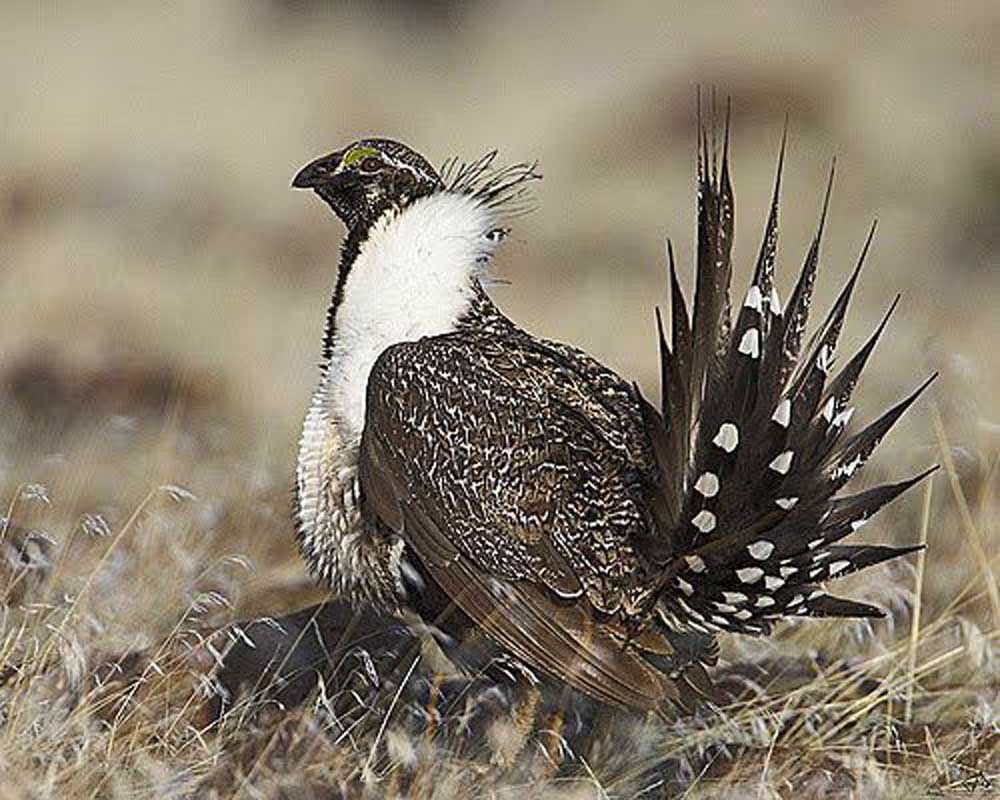WDFW warns solar farm could put sage grouse population at risk
Published 4:30 pm Monday, December 20, 2021

- Greater sage grouse. Washington state officials are worried a planned solar farm could impact the state’s only sustaining population of the protected bird.
If built, a 2,390-acre solar farm on Badger Mountain in north-central Washington could finish off the state’s greater sage grouse population, the Washington Department of Fish and Wildlife warns.
The mountain, near East Wenatchee and about 100 miles east of Seattle, is in Douglas County, the grouse’s “last stronghold” in the state, according to fish and wildlife Regional Director Brock Hoenes.
Trending
In a letter this month to the Energy Facility Site Evaluation Council, Hoenes wrote that a solar farm on the mountain would be a significant risk to the grouse’s survival.
Although Aurora Solar LLC’s solar panels would cover mostly unirrigated farmland, the sage grouse rely on wheat fields, as well as shrub-steppe, Hoenes stated.
“The mosaic of habitats, including dryland wheat, are utilized by all stages of sage grouse for rearing, foraging, migration and movement,” he wrote.
An Aurora Solar spokesman responded Monday in an email. “We are in the early stages of working with EFSEC and the WDFW to determine how best to go about resolving WDFW concerns,” he said.
Aurora Solar applied to site council in October after being blocked by a Douglas County ordinance that bans solar projects within 7 miles of habitat for any state protected species.
Although not federally listed, greater sage grouse are a state endangered species. The imperiled bird poses an obstacle for building solar farms east of the Cascades.
Trending
Gov. Jay Inslee’s latest budget proposal includes more money for fish and wildlife to reconcile solar farms and sage grouse recovery.
Fish and Wildlife counted 699 greater sage grouse in the state this year. Douglas County has the only self-sustaining population.
The company said in a presentation to the Energy Facility Site Evaluation Council that Badger Mountain is ideal for a solar farm. It’s flat and sunny and 87% of the proposed project area is farmland.
The company surveyed the area in May and reported seeing no sage grouse or sage grouse droppings.
Hoenes said the survey was inadequate. There is longstanding evidence that sage grouse occupy the plateau, he said.
Last spring, after wildfires burned other sage grouse habitat in the county, 29 male sage grouse were seen on Badger Mountain.
Accounting for females, Badger Mountain likely had about 75 grouse, Hoenes said.
The only greater sage grouse known in Washington outside Douglas County are 24 males in Yakima County and three males in Franklin County.
Hoenes recommended the solar farm be moved or undergo a more thorough environmental review to consider options, including not building the solar farm.
Aurora says it has lined up leases with five property owners and is negotiating with the state Department of Natural Resources to lease land now leased for wheat farming.
If the Energy Facility Site Evaluation Council approves the project, its recommendation will go to the governor for a final decision. The governor has made climate change a focus of his administration, spurring renewable energy proposals east of the Cascades.
Aurora Solar is owned by Avangrid Renewables, which is part of the Iberdola Group, a Spanish company that describes itself as a global leader in renewable energy.








